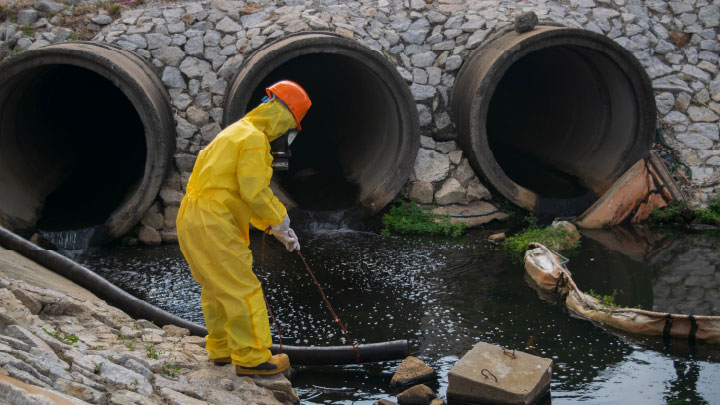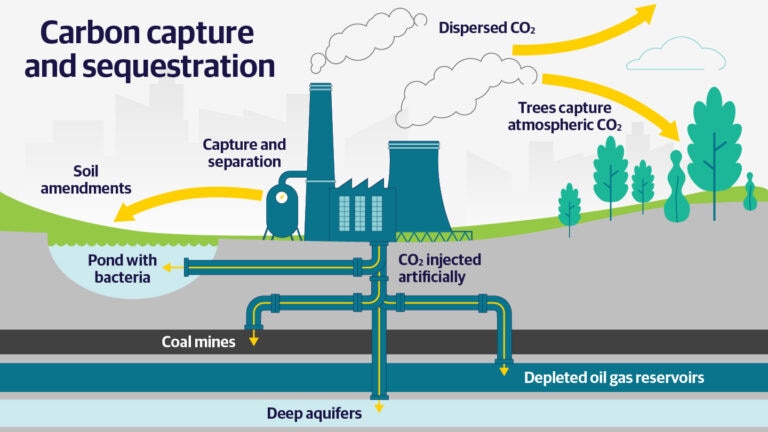
In the exuberance that followed the Second World War, per- and polyfluoroalkyl substances (PFAS) emerged as another modern miracle, a suite of synthetic chemicals with multiple applications from effective firefighting to heat, stain, and corrosion resistance.
PFAS chemicals are now ubiquitous and have a variety of uses, including:
- smothering fires,
- lining non-stick pans,
- insulating electrical wires, and
- protecting carpets and garments from stains.
The risks of PFAS
Among its virtues, however, is endurance: PFAS chemicals are nearly impervious to degradation, and today, most people in the United States have been exposed to PFAS and have it in their blood.
Potential adverse health risks include kidney disease, thyroid disease, high blood pressure, high cholesterol and possibly some cancers. While there is no federal maximum concentration level (MCL) set for PFAS, the Environmental Protection Agency (EPA) advises a limit of 70 parts per trillion (ppt) for two of the most common PFAS compounds, PFOA/PFOS. Some states, like New Jersey, have set their own standards, and others plan to do so. But left untreated, PFAS lingers in soil and groundwater indefinitely, earning the nickname, the “forever chemical.”
The environmental challenge
As of January 2021, according to the non-profit Environmental Working Group, there are 2,337 locations in 49 states affected by PFAS contamination, including public and private water systems.
Four major contamination sources are:
- fire training/response sites,
- industrial sites,
- landfills, and
- wastewater treatment plants.
As concern grows and scientific inquiry progresses, more states expect to propose MCLs; final regulations at the state and federal levels almost certainly will lead to increases in enforcement actions.
The high value of environmental claims and key cost drivers
The actions of the EPA and some states to set MCL standards for PFAS, along with growing awareness of PFAS contamination, are key drivers of claims.
For example:
- In Minnesota, a state suit against one manufacturer led to a $850 million settlement, with most going towards drinking water and natural resource remediation projects.
- A contaminated manufacturing site in West Virginia was subject to a lawsuit with more than 3,000 plaintiffs, leading to a settlement of $670 million. Similar actions have occurred in Georgia and Alabama.
Other factors may also affect claims frequency and severity:
- The use of firefighting foam: PFAS is found in aqueous film-forming foams or AFFFs. Commonly used throughout the United States, these Class B firefighting foams are used to extinguish fires involving flammable and combustible liquids, oils, gases, and more. Cleanup costs of PFAS compounds in AFFF can be very costly due to limited treatment options and resources.
- Shifts in litigation: In addition to PFAS producers, manufactures that incorporate chemicals into their products are now being held liable for environmental contamination. Suits are also being led by large, well-funded toxic tort firms with experience in similar types of issues like asbestos and methyl tert-butyl ether (MTBE). Substantial backing from private equity firms may also translate into better-funded cases that could lead to greater awards.
- Growing public awareness: Recent movie releases on PFAS as well as news coverage of large lawsuits have likely elevated awareness and could potentially shift juror sentiment in favor of individual plaintiffs.
Staying ahead of PFAS and emerging environmental risks
Given the long-lasting impacts of PFAS, having the appropriate insurance protection is paramount. At Liberty Mutual, our environmental liability team proactively helps customers manage these exposures by examining past and present insurance programs, including general liability policies, pollution legal liability, and production pollution policies. We also review all contracts for potential indemnity benefits or obligations.
Most importantly, as we continue to investigate and learn, we use the insights we gain to prepare for the next emerging contaminant, helping our customers mitigate risk by anticipating and preparing for future needs.
Related insights
This website is general in nature, and is provided as a courtesy to you. Information is accurate to the best of Liberty Mutual’s knowledge, but companies and individuals should not rely on it to prevent and mitigate all risks as an explanation of coverage or benefits under an insurance policy. Consult your professional advisor regarding your particular facts and circumstance. By citing external authorities or linking to other websites, Liberty Mutual is not endorsing them.



